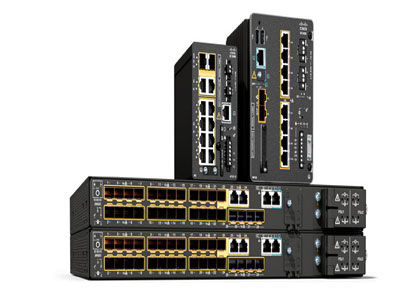Key Takeaway
Common protocols used in Industrial Ethernet include PROFINET, EtherNet/IP, Modbus TCP, and EtherCAT. These protocols enable efficient communication between devices like PLCs, sensors, and actuators in industrial networks.
PROFINET and EtherNet/IP are popular for real-time control and automation. Modbus TCP is simple and reliable, making it ideal for data monitoring and basic control tasks. EtherCAT stands out for its high-speed, deterministic communication, making it perfect for precision systems like robotics. Each protocol serves specific needs, and choosing the right one depends on the application’s complexity, speed, and reliability requirements.
Overview of PROFINET: An Industrial Ethernet Standard
PROFINET (Process Field Network) is one of the most widely used industrial Ethernet protocols. Developed by Siemens, it’s designed to support real-time communication in industrial settings. What makes PROFINET stand out is its versatility. It supports applications ranging from process automation to motion control, making it a go-to solution for many industries.
A key feature of PROFINET is its ability to handle time-critical data with deterministic communication. For example, in a robotic assembly line, PROFINET ensures that commands are delivered with millisecond precision, keeping operations synchronized.
Another advantage is its seamless integration with other industrial networks like PROFIBUS, enabling smooth transitions for systems upgrading to Ethernet-based technologies. While its advanced capabilities come at a higher cost, the reliability and performance it offers make it worth the investment for complex, high-stakes environments.

An Industrial Ethernet Standard H2: EtherNet/IP for Real-Time Industrial Automation
EtherNet/IP (Industrial Protocol) is another popular choice in industrial automation. Built on standard Ethernet, it uses the Common Industrial Protocol (CIP) to provide robust and flexible communication for industrial devices. Its open architecture makes it easy to integrate with a wide range of equipment, from sensors to controllers.
One of EtherNet/IP’s biggest strengths is its real-time performance. It supports time-sensitive communication through CIP Sync and CIP Motion, ensuring that data is transmitted quickly and reliably. For instance, in an automated packaging system, EtherNet/IP ensures precise coordination between conveyors and robotic arms.
Scalability is another benefit of EtherNet/IP. Whether you’re running a small operation or managing a large factory, this protocol can adapt to your needs. Its compatibility with standard Ethernet also means lower setup costs compared to specialized protocols. However, it requires careful configuration to optimize performance in latency-sensitive applications.
EtherNet/IP for Real-Time Industrial Automation H2: Modbus TCP: A Reliable Protocol for Industrial Communication
EtherNet/IP for Real-Time Industrial Automation
H2: Modbus TCP: A Reliable Protocol for Industrial Communication
Modbus TCP: A Reliable Protocol for Industrial Communication H2: How EtherCAT Ensures High-Speed Data Transmission
EtherCAT (Ethernet for Control Automation Technology) is synonymous with speed and efficiency. Designed specifically for real-time control applications, it excels in delivering high-speed communication with minimal latency. Unlike other protocols, EtherCAT processes data on the fly, reducing delays and boosting performance.
In high-speed manufacturing systems, such as semiconductor production, EtherCAT’s ability to handle large volumes of data in real-time ensures smooth operations. Its unique approach of using frames to carry multiple data packets simultaneously makes it incredibly efficient.
Another benefit of EtherCAT is its scalability. Whether you’re running a few devices or hundreds, the protocol maintains its performance. However, its specialized nature can make implementation more complex compared to simpler protocols like Modbus TCP. But for applications demanding high precision and speed, EtherCAT is hard to beat.
A Reliable Protocol for Industrial Communication H2: How EtherCAT Ensures High-Speed Data Transmission H2: Comparing Common Industrial Ethernet Protocols
Each industrial Ethernet protocol has its strengths and ideal applications, making it essential to understand how they compare. PROFINET shines in versatility and time-critical applications, making it perfect for complex environments. EtherNet/IP is a flexible and scalable choice, balancing real-time performance with compatibility.
Modbus TCP, on the other hand, prioritizes simplicity and interoperability, making it great for monitoring and basic automation tasks. EtherCAT stands out for its unmatched speed and precision, ideal for high-performance systems.
The right protocol often depends on your specific needs. For example, if you’re managing a large, diverse system, Modbus TCP might be the easiest to implement. However, for operations requiring real-time control, EtherCAT or PROFINET would be a better choice. Understanding these differences helps engineers design networks that balance cost, performance, and reliability.
Conclusion
Selecting the best industrial Ethernet protocol depends on your application requirements. PROFINET and EtherCAT excel in speed and precision, while EtherNet/IP offers flexibility and scalability. Modbus TCP remains a reliable option for simpler systems.
As a new engineer, focus on understanding these protocols in-depth. The right choice can improve efficiency, reduce downtime, and support your organization’s long-term goals. Familiarity with these protocols equips you to make informed decisions and contribute meaningfully to your team.
